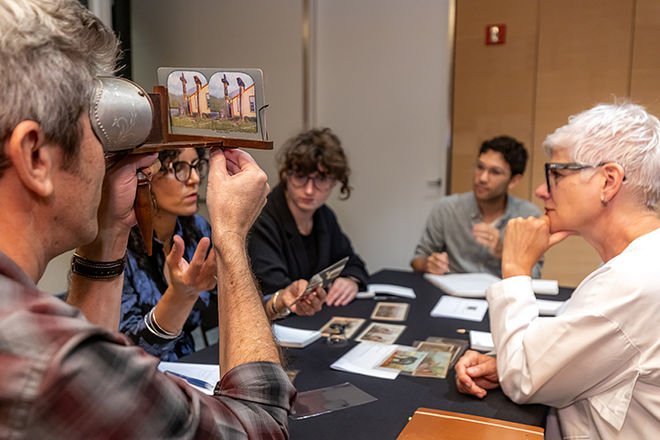Sören Stark spoke at the Seminar in Comparative Medieval Material Culture on Wednesday, December 2, 2015. His talk was entitled “Between China, Iran, and Byzantium: The Türks in Inner Asia from the Sixth to the Eighth Century.”
At Bard Graduate Center Professor Stark investigated how the “World Empire” of the nomadic Türks, arising from the Inner Asian steppes around the middle of the sixth century and spanning, during its apogee some 30 years later, from Crimea to the Hindukush and to Manchuria, remains one of the least known hegemonic polities in the history of Eurasia. In popular perception it is largely overshadowed by the later Chinggisid “World Empire,” although the Mongols owed much of their imperial ideology and structures of governance to the Türks. Like the Pax Mongolica some 700 years later, the unification of large parts of Eurasia under Türk rule considerably intensified diplomatic, economic, and cultural exchange across the Eurasian continent (“Silk Roads”). In this context much attention has been given to the role of Sogdian merchants. Professor Stark’s talk shifted the focus to the nomadic Türk elites as agents of cultural communication, transmission, and appropriation in a framework of shared political culture and interstate competition between China, the Iranian world, and Byzantium. In particular, he inquired how the Türks’ active participation in this exchange network and their competition with other imperial ‘players’ of their time impacted and shaped their own self-representation.
Sören Stark is Assistant Professor of Central Asian Art and
Archaeology at the Institute for the Study of the Ancient World at New York
University. He specializes in the political and cultural interrelations between
pastoral nomads in Central and Inner Asia and their sedentary neighbors, and
has produced a monograph on the archaeology and history of the Türks in
Central and Inner Asia (published in 2008 as Die Alttürkenzeit in
Mittel- und Zentralasien. Archäologische und historische Studien, Nomaden und
Sesshafte 6. Wiesbaden: Ludwig-Reichert-Verlag) and a major exhibition in New
York and Washington on the culture of Early Iron Age nomads in the territory of
present-day Kazakhstan (see the catalogue Nomads and Networks: The
Ancient Art and Culture of Kazakhstan. Princeton/New York: Princeton
University Press 2012, edited together with K. Rubinson). He is currently
leading an archaeological field project on territorial fortifications in
fourth- to eighth-century CE Bukhara (Uzbekistan). He is also (with F. Kidd)
co-editor of a handbook of Central Asian archaeology and art now in preparation
at Oxford University Press.











